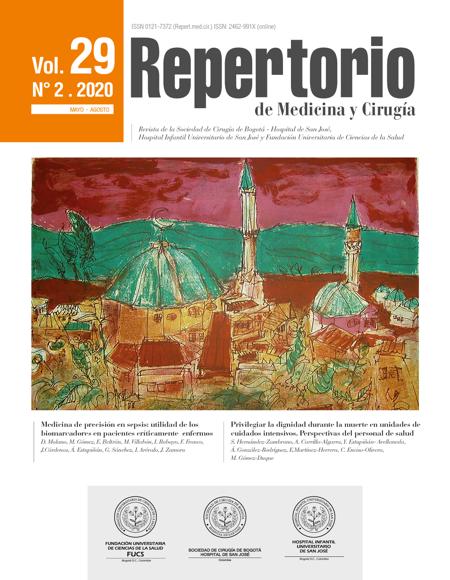Care and notice of unidentified patients
Atención y notificación de un paciente NN
![]()
![]()

Show authors biography
Introduction: unidentified N.N “Nomen nescio” patients pose a challenge for healthcare providers. To determine their identity, find their family and inform about the situation may be as complicated as diagnosing their illness. Even from the psychosocial perspective the lack of identity may lead to additional problems for the provision of healthcare services. Clinical case: a 36 year-old male trauma patient who was hit by a car as a pedestrian arrives to the emergency room of Hospital de San José in Bogotá; at the time of admission, his Glasgow coma scale score is 11 and has no belongings that might reveal his identity. He undergoes a surgical procedure in which he requires vasopressor and respiratory support as his lesion was classified as an emergency. He was admitted to the Intensive Care Unit and was declared an unidentified male patient, thus the protocol to uncover his identity must be applied. Discussion: Colombia has a protocol regarding provision of healthcare services to patients admitted to a hospital as unidentified N.N “Nomen nescio” patients. Knowing about this protocol is important among healthcare providers, especially among the medical staff; for their work must go beyond the management and prevention of the bio-clinical affection, focusing in notifying the corresponding entities and articulating with other disciplines to establish patient´s identity, for there may probably be someone inquiring for a missing relative who might be the unidentified patient who is under our care.
Article visits 6938 | PDF visits 1328
Downloads
- Rodriguez MF. NN: Cuerpos rezables, numerables pero nunca identificables[Internet]. Bogotá: ALTUS en línea; 2015 [citado 2019 julio]; Recuperado de: http://www.usergioarboleda.edu.co/altus/politica/nn-cuerpos-rezables-numerables-pero-nunca-identificables/.
- Fiscalía General de la Nación. Manual de procedimientos de Fiscalía en el sistema penal acusatorio colombiano. Colombia: Fiscalía General de la Nación; 2009. p. 279.
- Moreno M. ¿Por qué cifra de desaparecidos sería mayor al registro que se tiene?. Un antropólogo lo sugiere y da varias razones de qué tan probable puede ser esto [Internet]. El Tiempo. 2019;Sect. Justicia.
- Mora Y, Ramirez A. Protocolo para la realización de tramites de identificación. p. 5-7.
- Charry JD, Cáceres JF, Salazar AC, López LP, Solano JP. Trauma craneoencefálico. Revisión de la literatura. Revista Chilena de Neurocirugía. 2017;43(2):177-82. DOI: https://doi.org/10.36593/rev.chil.neurocir.v43i2.82
- Fiscalía General de la Nación. Cuerpo Técnico Investigadico. Formato para verificación de identidad de pacientes N.N.s. Colombia: Fiscalía General de la Nación.
- Saavedra M. Identificación de pacientes que ingresan a urgencias. 2 ed. Bogotá, 2016.
- Morales ML, Niño Córdoba E. Identificación de cadáveres en la práctica forense. Colombia: Instituto Nacional de Medicina Legal y Ciencias Forenses; 2009. p. 233.












